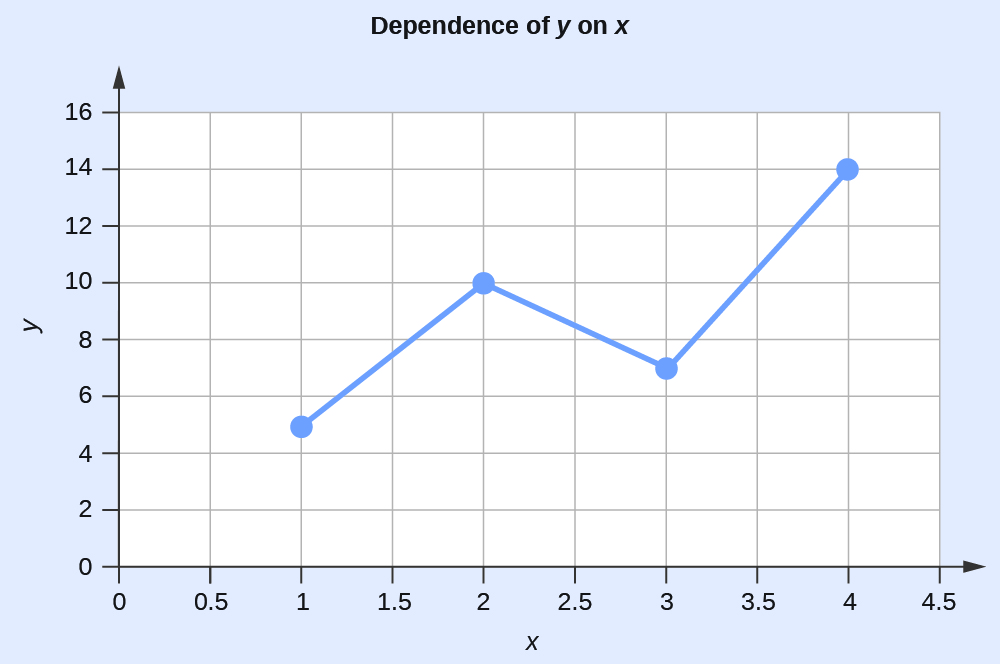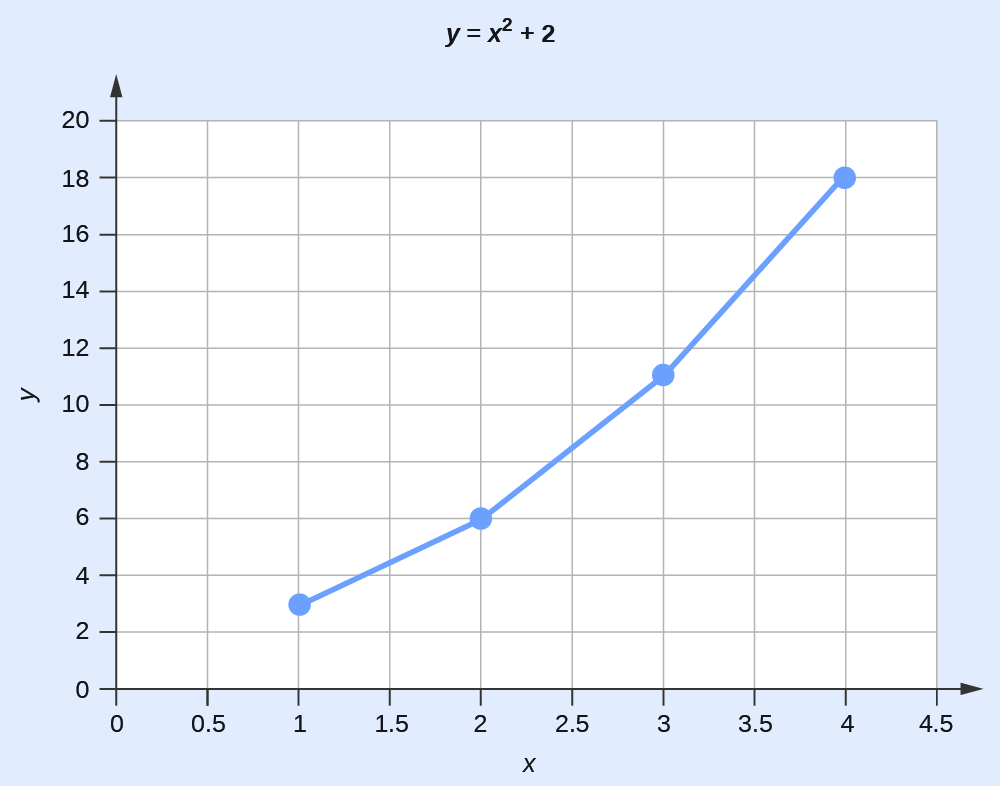Essential Mathematics
Exponential Arithmetic
Exponential notation is used to express very large and very small numbers as a product of two numbers. The first number of the product, the digit term, is usually a number not less than 1 and not greater than 10. The second number of the product, the exponential term, is written as 10 with an exponent. Some examples of exponential notation are:
1000 = 1×103
100 = 1×102
10 = 1×101
1 = 1×100
0.1 = 1×10-1
0.001 = 1×10-3
2386=2.386×1000 = 2.386×103
0.123=1.23×0.1 = 1.23×10-1
The power (exponent) of 10 is equal to the number of places the decimal is shifted to give the digit number. The exponential method is particularly useful notation for every large and very small numbers. For example, 1,230,000,000 = 1.23 x 109, and 0.00000000036 = 3.6 x 10−10.
Significant Figures
A beekeeper reports that he has 525,341 bees. The last three figures of the number are obviously inaccurate, for during the time the keeper was counting the bees, some of them died and others hatched; this makes it quite difficult to determine the exact number of bees. It would have been more accurate if the beekeeper had reported the number 525,000. In other words, the last three figures are not significant, except to set the position of the decimal point. Their exact values have no meaning useful in this situation. In reporting any information as numbers, use only as many significant figures as the accuracy of the measurement warrants.
The importance of significant figures lies in their application to fundamental computation. In addition and subtraction, the sum or difference should contain as many digits to the right of the decimal as that in the least certain of the numbers used in the computation (indicated by underscoring in the following example).
Addition and Subtraction with Significant Figures
Add 4.383 g and 0.0023 g.
Solution
4.383g
0.0023g
4.385g
In multiplication and division, the product or quotient should contain no more digits than that in the factor containing the least number of significant figures.
Multiplication and Division with Significant Figures
Multiply 0.6238 by 6.6.
Solution
0.6238×6.6=4.1
When rounding numbers, increase the retained digit by 1 if it is followed by a number larger than 5 (“round up”). Do not change the retained digit if the digits that follow are less than 5 (“round down”). If the retained digit is followed by 5, round up if the retained digit is odd, or round down if it is even (after rounding, the retained digit will thus always be even).
*
The Use of Logarithms and Exponential Numbers
The common logarithm of a number (log) is the power to which 10 must be raised to equal that number. For example, the common logarithm of 100 is 2, because 10 must be raised to the second power to equal 100. Additional examples are shown in Table 1.
| Number | Number Expressed Exponentially | Common Logarithm |
| 1000 | 103 | 3 |
| 10 | 101 | 1 |
| 1 | 100 | 0 |
| 0.1 | 10-1 | -1 |
| 0.001 | 10-3 | -3 |
What is the common logarithm of 60? Because 60 lies between 10 and 100, which have logarithms of 1 and 2, respectively, the logarithm of 60 is 1.7782; that is,
60=101.7782
The common logarithm of a number less than 1 has a negative value. The logarithm of 0.03918 is −1.4069, or
0.03918=10−1.4069=1/101.4069
To obtain the common logarithm of a number, use the log button on your calculator. To calculate a number from its logarithm, take the inverse log of the logarithm, or calculate 10x (where x is the logarithm of the number).
The natural logarithm of a number (ln) is the power to which e must be raised to equal the number; e is the constant 2.7182818. For example, the natural logarithm of 10 is 2.303; that is,
102.303=2.71828182.303
To obtain the natural logarithm of a number, use the ln button on your calculator. To calculate a number from its natural logarithm, enter the natural logarithm and take the inverse ln of the natural logarithm, or calculate ex (where x is the natural logarithm of the number).
Logarithms are exponents; thus, operations involving logarithms follow the same rules as operations involving exponents.
Rule #1:
The logarithm of a product of two numbers is the sum of the logarithms of the two numbers.
log xy = log x + log y, and ln xy = ln x + ln y
Rule #2:
The logarithm of the number resulting from the division of two numbers is the difference between the logarithms of the two numbers.
log [latex]\frac{x}{y}[/latex] = log x − log y, and ln [latex]\frac{x}{y}[/latex] = ln x − ln y
Rule #3:
The logarithm of a number raised to an exponent is the product of the exponent and the logarithm of the number.
log xn = nlog x and ln xn = nln x
*
Two-Dimensional (x-y) Graphing
The relationship between any two properties of a system can be represented graphically by a two-dimensional data plot. Such a graph has two axes: a horizontal one corresponding to the independent variable, or the variable whose value is being controlled (x), and a vertical axis corresponding to the dependent variable, or the variable whose value is being observed or measured (y).
When the value of y is changing as a function of x (that is, different values of x correspond to different values of y), a graph of this change can be plotted or sketched (Figure 1). The graph can be produced by using specific values for (x,y) data pairs (Table 2).
Graphing the Dependence of y on x
As shown, (x,y) points can be plotted on a graph and connected to produce a graphical representation of the dependence of y on x.
| x | y |
| 1 | 5 |
| 2 | 10 |
| 3 | 7 |
| 4 | 14 |

If the function that describes the dependence of y on x is known, it may be used to compute x,y data pairs (Table 3) that may subsequently be plotted (Figure 2).
Plotting Data Pairs
If we know that y = x2 + 2, we can produce a table of a few (x,y) values and then plot the line based on the data shown here.
| x | y = x2 + 2 |
| 1 | 3 |
| 2 | 6 |
| 3 | 11 |
| 4 | 18 |

CC LICENSED CONTENT, SHARED PREVIOUSLY
OpenStax, Chemistry, Section B Essential Mathematics
Provided by: Rice University
Access for free at https://openstax.org/details/books/chemistry-2e
License: CC-BY 4.0
Adapted By: Sarah Malmquist

